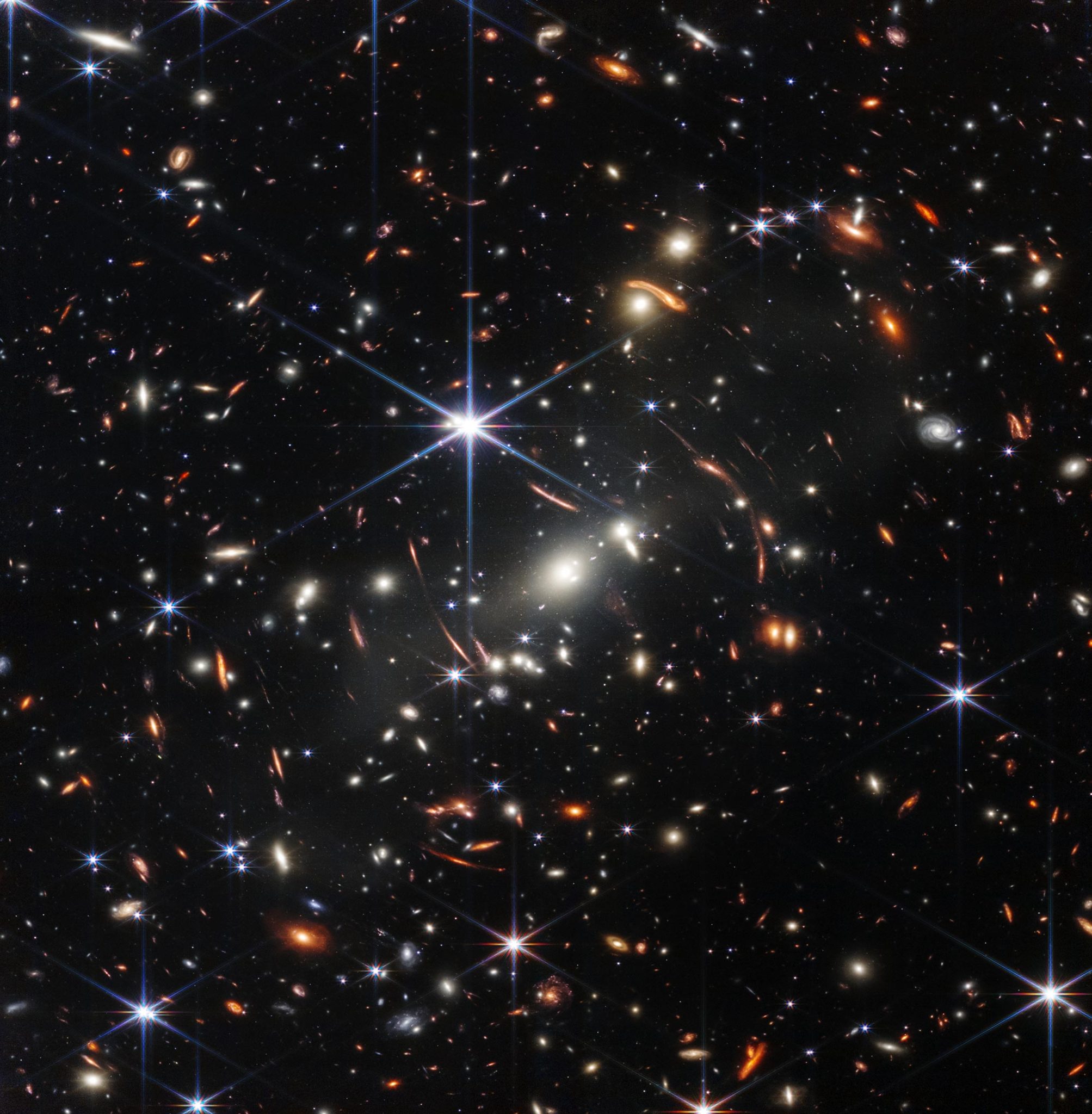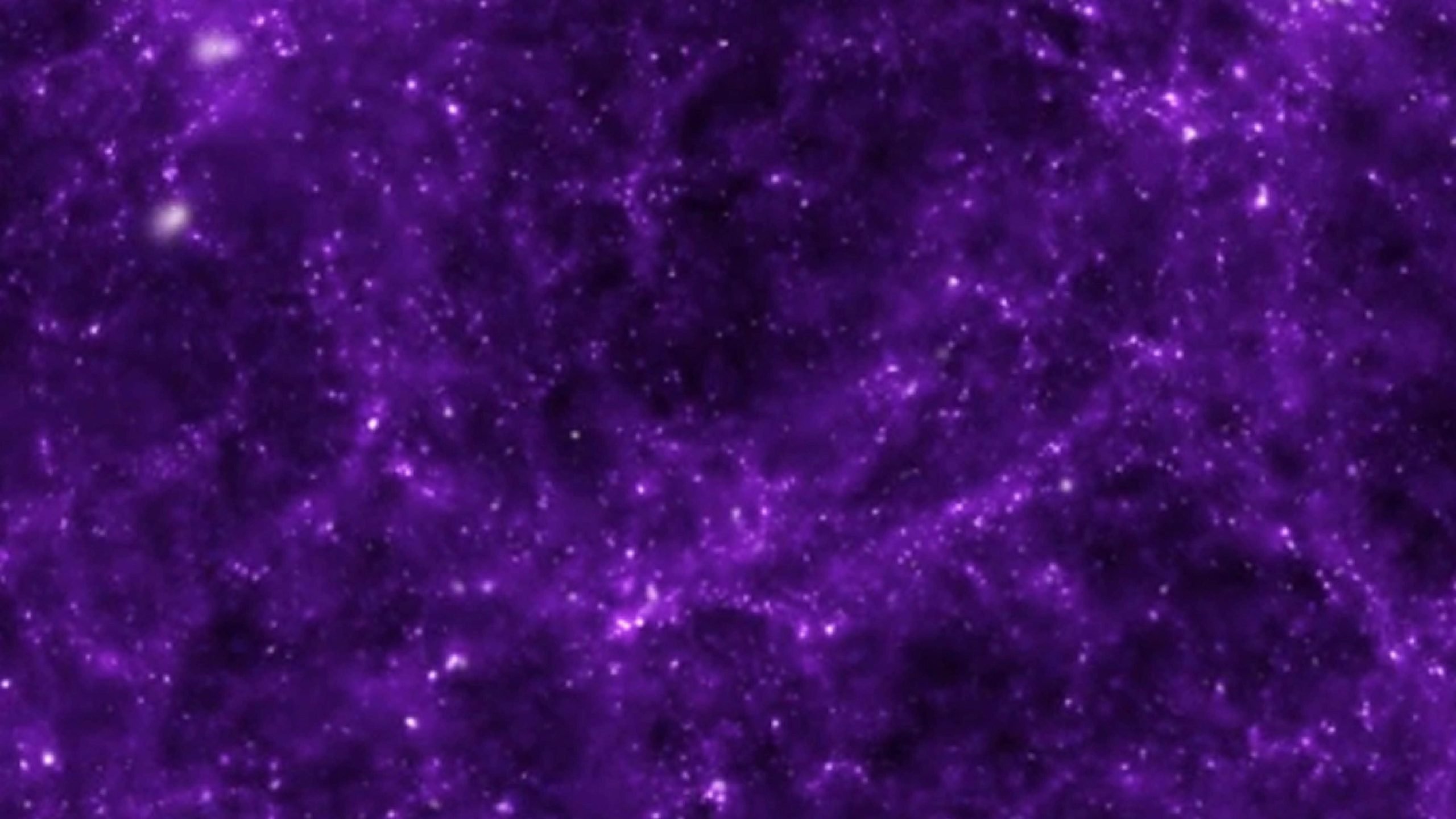
تفسير الطاقة المظلمة. الائتمان: التصور من قبل فرانك سامرز ، معهد علوم تلسكوب الفضاء. محاكاة بواسطة مارتن وايت ، وجامعة كاليفورنيا في بيركلي ، ولارس هيرنكفيست ، جامعة هارفارد
هل يمكن لإعادة تشكيل نظرية الجاذبية لألبرت أينشتاين أن تحل أحد أعظم ألغاز الفيزياء الفلكية؟ ليس بعد ، وفقًا لدراسة جديدة شارك في تأليفها[{” attribute=””>NASA scientists.
The universe is expanding at an accelerating rate, and physicists don’t know why. This phenomenon seems to contradict everything scientists understand about gravity’s effect on the cosmos: It’s as if you threw an apple in the air and instead of coming back down, it continued upward, faster and faster. The cause of the cosmic acceleration, dubbed dark energy, remains a mystery.
A new study marks the latest effort to determine whether this is all simply a misunderstanding: that expectations for how gravity works at the scale of the entire universe are flawed or incomplete. This potential misunderstanding might help researchers explain dark energy. However, the study – one of the most precise tests yet of Albert Einstein’s theory of gravity at cosmic scales – finds that the current understanding still appears to be correct. The study was from the international Dark Energy Survey, using the Victor M. Blanco 4-meter Telescope in Chile.
The results, authored by a group of scientists that includes some from NASA’s Jet Propulsion Laboratory (JPL), were presented Wednesday, August 24, at the International Conference on Particle Physics and Cosmology (COSMO’22) in Rio de Janeiro. The work helps set the stage for two upcoming space telescopes that will probe our understanding of gravity with even higher precision than the new study and perhaps finally solve the mystery.

This image – the first released from NASA’s James Webb Space Telescope – shows the galaxy cluster SMACS 0723. Some of the galaxies appear smeared or stretched due to a phenomenon called gravitational lensing. This effect can help scientists map the presence of dark matter in the universe. Credit: NASA, ESA, CSA, and STScI
More than a century ago, Albert Einstein developed his Theory of General Relativity to describe gravity. Thus far it has accurately predicted everything from the orbit of Mercury to the existence of black holes. But some scientists have argued that if this theory can’t explain dark energy, then maybe they need to modify some of its equations or add new components.
To find out if that’s the case, members of the Dark Energy Survey looked for evidence that gravity’s strength has varied throughout the universe’s history or over cosmic distances. A positive finding would indicate that Einstein’s theory is incomplete, which might help explain the universe’s accelerating expansion. They also examined data from other telescopes in addition to Blanco, including the ESA (European Space Agency) Planck satellite, and reached the same conclusion.
Einstein’s theory still works, according to the study. So no there’s no explanation for dark energy yet. However, this research will feed into two upcoming missions: ESA’s Euclid mission, slated for launch no earlier than 2023, which has contributions from NASA; and NASA’s Nancy Grace Roman Space Telescope, targeted for launch no later than May 2027. Both telescopes will search for changes in the strength of gravity over time or distance.
Blurred Vision
How do scientists know what happened in the universe’s past? By looking at distant objects. A light-year is a measure of the distance light can travel in a year (about 6 trillion miles, or about 9.5 trillion kilometers). That means an object one light-year away appears to us as it was one year ago, when the light first left the object. And galaxies billions of light-years away appear to us as they did billions of years ago. The new study looked at galaxies stretching back about 5 billion years in the past. Euclid will peer 8 billion years into the past, and Roman will look back 11 billion years.
The galaxies themselves don’t reveal the strength of gravity, but how they look when viewed from Earth does. Most matter in our universe is dark matter, which does not emit, reflect, or otherwise interact with light. While physicists don’t know what it’s made of, they know it’s there, because its gravity gives it away: Large reservoirs of dark matter in our universe warp space itself. As light travels through space, it encounters these portions of warped space, causing images of distant galaxies to appear curved or smeared. This was on display in one of first images released from NASA’s James Webb Space Telescope.
https://www.youtube.com/watch؟v=oN4SEFIMEO0
يشرح هذا الفيديو ظاهرة تسمى عدسة الجاذبية ، والتي تجعل صور المجرات تبدو مشوهة أو ملطخة. يحدث هذا التشويه بسبب الجاذبية ، ويمكن للعلماء استخدام التأثير لاكتشاف المادة المظلمة التي لا تنبعث منها أو تعكس الضوء. الائتمان: مركز جودارد لرحلات الفضاء التابع لناسا
يبحث علماء Dark Energy Survey في صور المجرات عن تشوهات أكثر دقة ناتجة عن انحناء الفضاء للمادة المظلمة ، والمعروفة باسم الضعف. عدسة الجاذبية. تحدد قوة الجاذبية حجم وتوزيع هياكل المادة المظلمة ، ويحدد الحجم والتوزيع كيف تبدو هذه المجرات لنا. يمكن للصور أن تكشف عن قوة الجاذبية على مسافات مختلفة من الأرض وعلى مدى فترات طويلة من الزمن عبر تاريخ الكون. قام الفريق الآن بقياس أشكال أكثر من 100 مليون مجرة ، وحتى الآن ، تتطابق الملاحظات مع تلك التي تنبأت بها نظرية أينشتاين.
قالت المؤلفة المشاركة في الدراسة أغنيس فيرت ، التي أجرت البحث كباحثة ما بعد الدكتوراه في مختبر الدفع النفاث: “لا يزال هناك مجال لتحدي نظرية الجاذبية لأينشتاين ، حيث أصبحت القياسات أكثر دقة”. “ولكن لدينا الكثير لنفعله قبل أن نكون مستعدين لإقليدس ورومان. لذلك من المهم مواصلة التعاون مع العلماء حول العالم بشأن هذه المشكلة ، كما فعلنا مع مسح الطاقة المظلمة.
المرجع: “نتائج مسح الطاقة المظلمة للعام الثالث: قيود الامتدادات إلى ΛCDM مع ضعف العدسة والتكتل المجري” DES Collaboration: TMC Abbott ، M. أجوينا ، أ. ألاركون ، أو. ألفيس ، أ. آمون ، ج. أنيس ، س. أفيلا ، د. بيكون ، إي. باكستر ، ك. بيشتول ، السيد. بيكر ، جنرال موتورز. برنشتاين ، س. بير ، ج. بليسيك ، س. بوكيت ، أ. براندو سوزا ، S.L. لجام ، د. بروكس ، د. بورك ، هـ. كاماتشو ، أ. كامبوس ، أ. كارنيرو روشيل ، م. كاراسكو كايند ، ج. كاريتيرو ، إف. كاستاندر ، ر. كاوثون ، سي. تشانغ ، أ. تشين ، ر. تشين ، أ. تشوي ، سي. كونسليس ، ج. كورديرو ، م. كوستانزي ، م. Groce ، و LN da Costa ، و MES Pereira ، و C. ديفيز ، تي إم ديفيز ، ج. دروز ، س. ديساي ، إي. دي فالنتينو ، إتش دي ديهل ، إس. تودلسون ، ب. دويل ، سي. دوكس ، أ. تريليكا واجنر ، ك. إيكرت ، د. إيفلر ، ف. إلسنر ، ج. إلوين بول ، س. إيفريت ، إكس. فانغ ، أ. فرحي ، إ. فيريرو ، أ. فيرد ، ب. فلوجر ، ب. فوسالبا ، د. فريدل ، أو. فريدريش ، ج. فريمان ، ج. جارسيا بيليدو ، م. جاتي ، ل. جياني ، د. جيانانتونيو ، ج. جيانيني ، د. جرون ، ر. جروندل ، ج. شويندت ، ج. جوتيريز ، ن. حماس ، أنا. هاريسون ، دبليو جي هارتلي ، ك. هيرنر ، س. هينتون ، د. هولواي ، ك. هانشيدت ، هـ. هوانغ ، إي. هوف ، د. هوترر ، ب. جاين ، تي جيه. جيمس ، م. جارفيس ، ن. جيفري ، د. جيلديما ، أ. كوفاكس ، إي. كروس ، ك. كوهن ، ن. كروبوتكين ، أو. لاهاف ، س. لي ، P.-F. ليغيت ، بي ليموس ، سي دي ليونارد ، إيه آر ليدل ، إم ليما ، إتش لين ، إن ماك كران ، جي إل مارشال ، جي ماكولو ، ج. مينا فرنانديز ، إف مينانتو ، آر ميكيل ، في ميراندا ، جي جي موهر ، ج. موير ، ج. مايلز ، س. نادادور ، أ. Navarro-Alcina، R.C. نيكول ، ر. أوغوندو ، واي. أوموري ، أ. بالميس ، س. باندي ، واي. بارك ، م. باتيرنو ، ف. باس- Chinzone، W.J. بيرسيفال ، أ. بيرس ، أ. Plazas Malacon، A. بوريتون ، ج. برات ، م. رافيري ، م. رودريغيز مونروي ، ب. Rokozhensky ، RB. رولينز ، أ.ك. رومر ، أ. رودمان ، ر. روزنفيلد ، أ. روز ، إس ريكوف ، س. ساموروف ، سي. سانشيز ، إي. سانشيز ، ج. سانشيز ، د. سانشيز سيد ، ق. سكاربين ، د. سكولنيك ، إل إف تشيكو ، آي. إشبيلية نورباي ، إ. شيلتون ، د. شين ، م. سميث ، م. سواريس سانتوس ، إي. سوشيتا ، م. ثابوت ، ج. دارلي ، د. توماس ، سي. إلى أ. Troja ، MA Troxell ، I. دودوزاس ، ت. فارجا ، م. فينشينزي ، أ. ووكر ، ن. ويفرديك ، آر إتش ويتشلر ، ج. ويلر ، ب. ياني ، ب. يين ، واي. تشانغ وج. Juntz ، 12 يوليو 2022 ، الفيزياء الفلكية> علم الكونيات والفيزياء الفلكية غير المجرية.
arXiv: 2207.05766

“متعصب للموسيقى. مستكشف متواضع جدا. محلل. متعصب للسفر. مدرس تلفزيوني متطرف. لاعب.”

